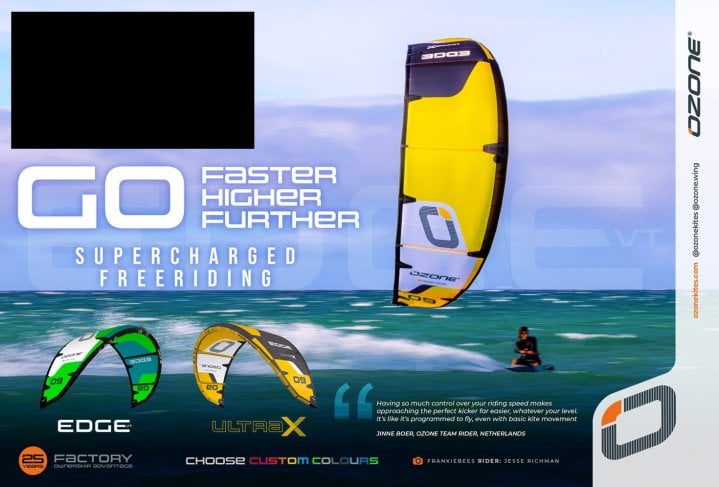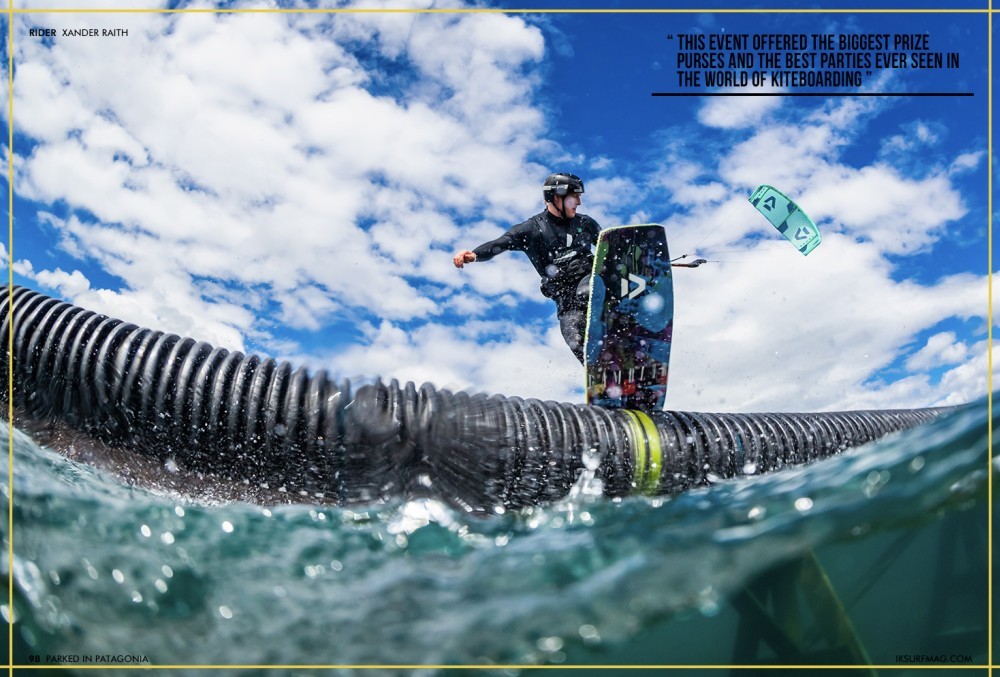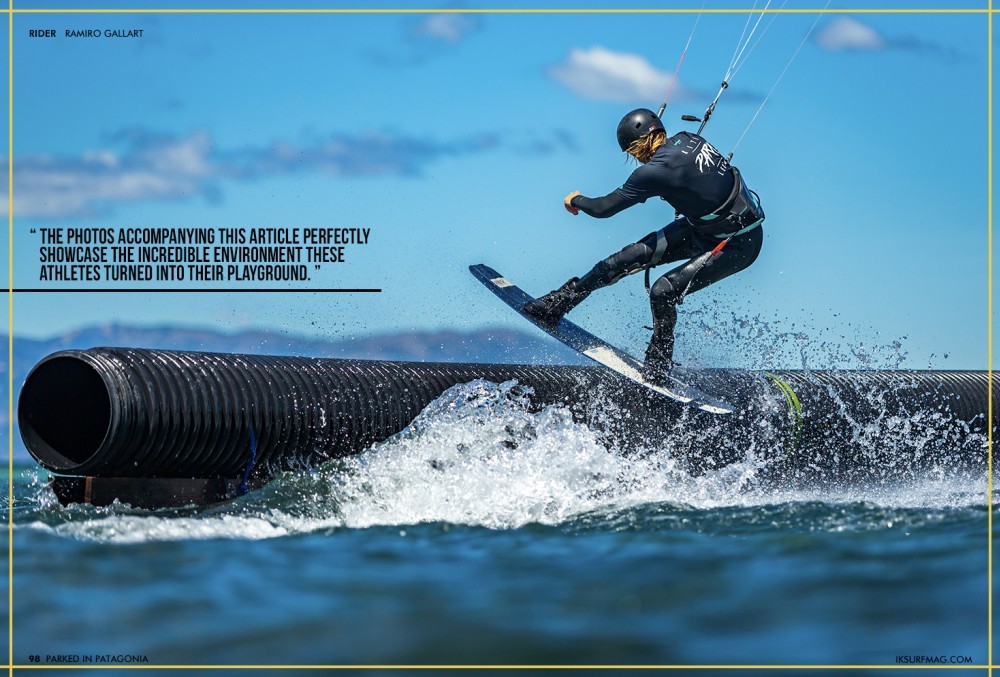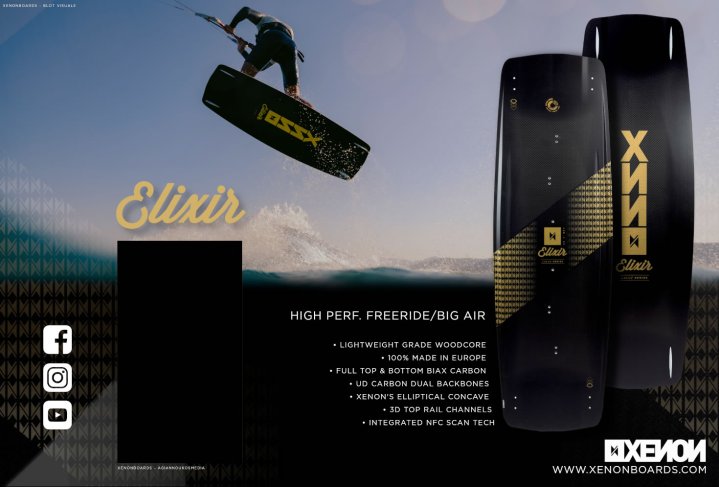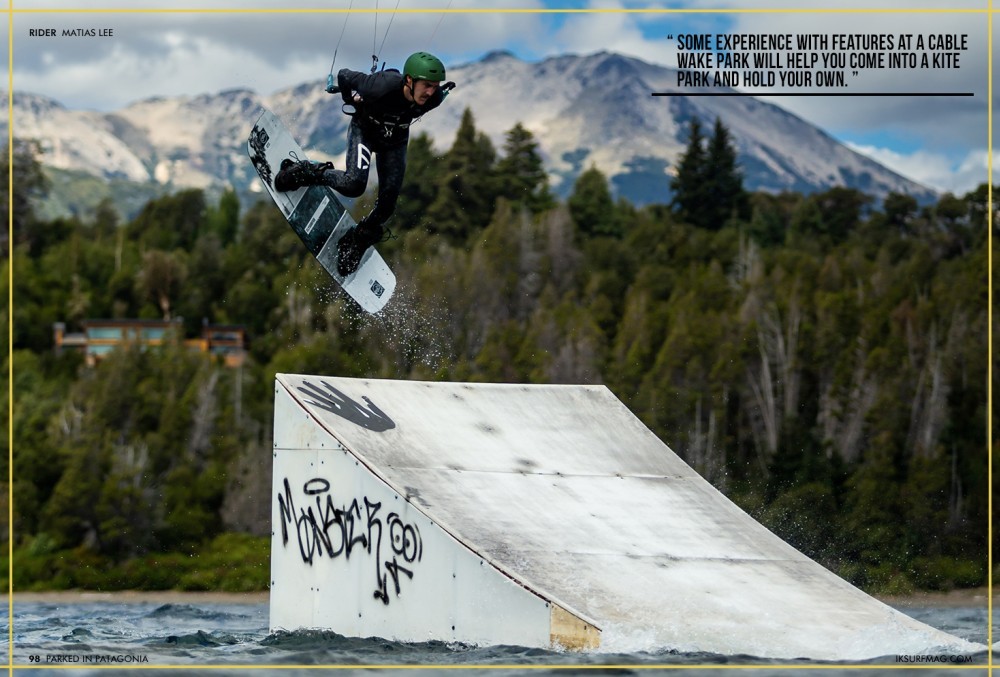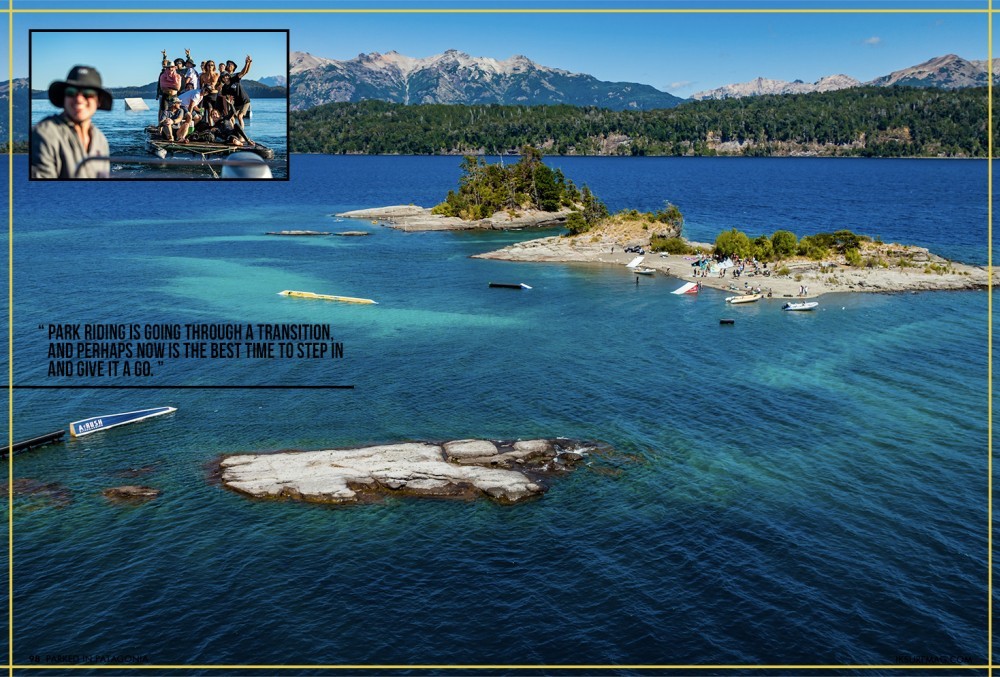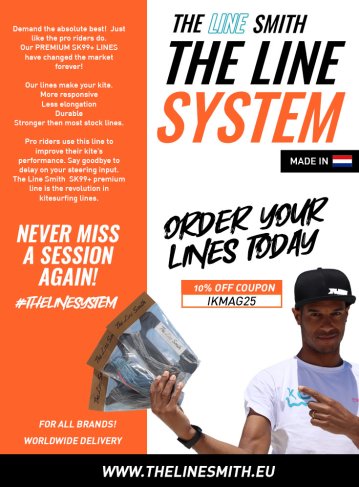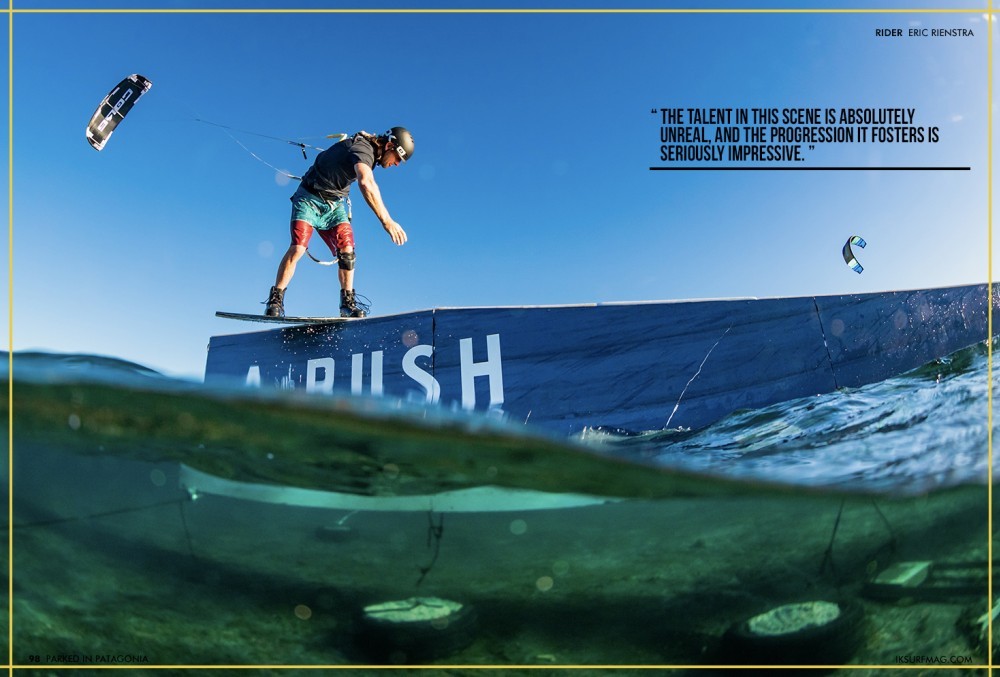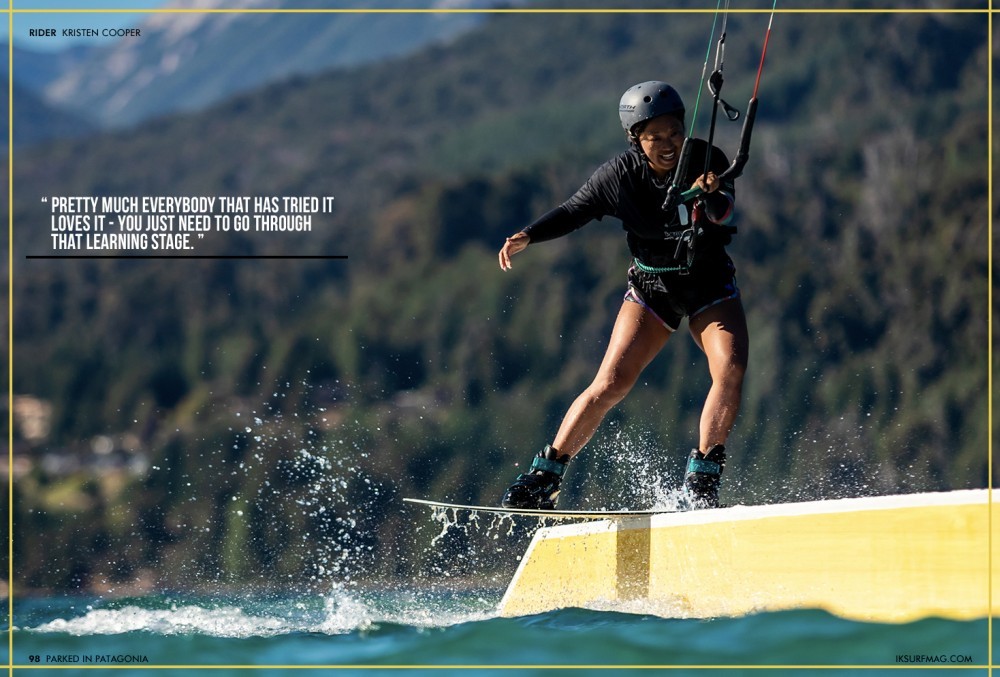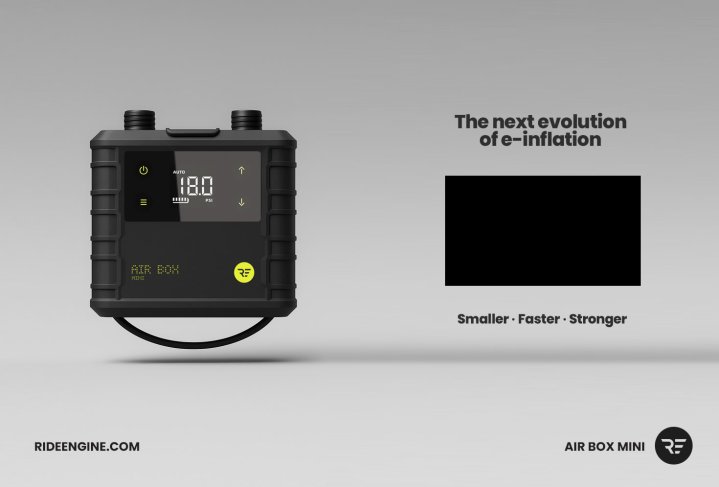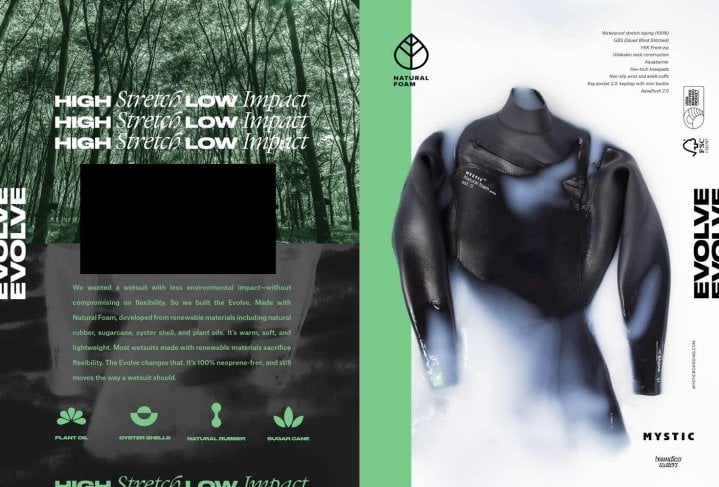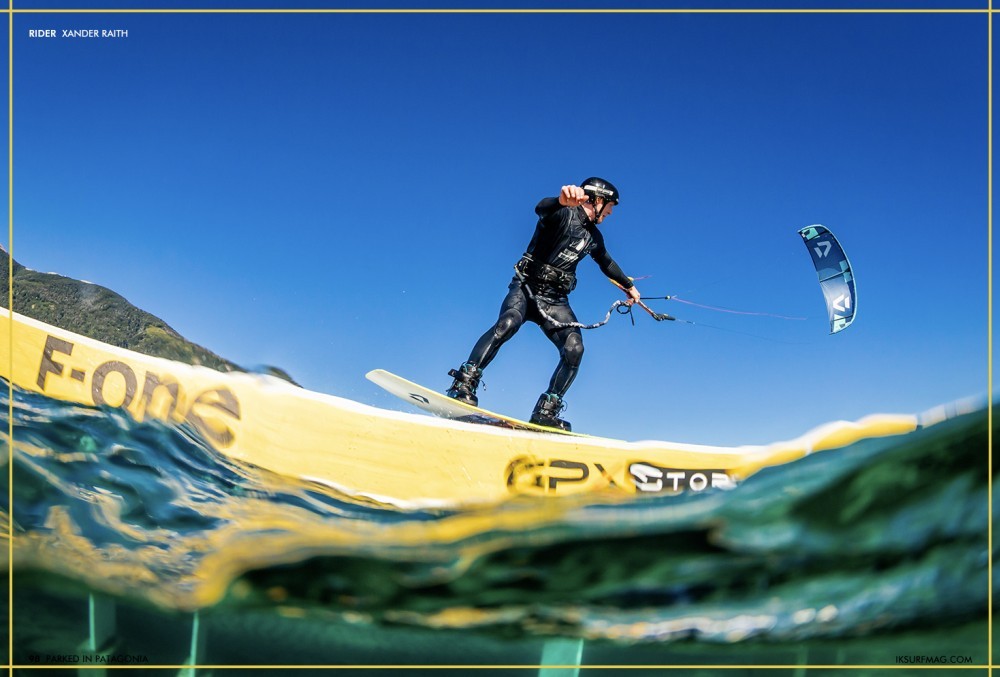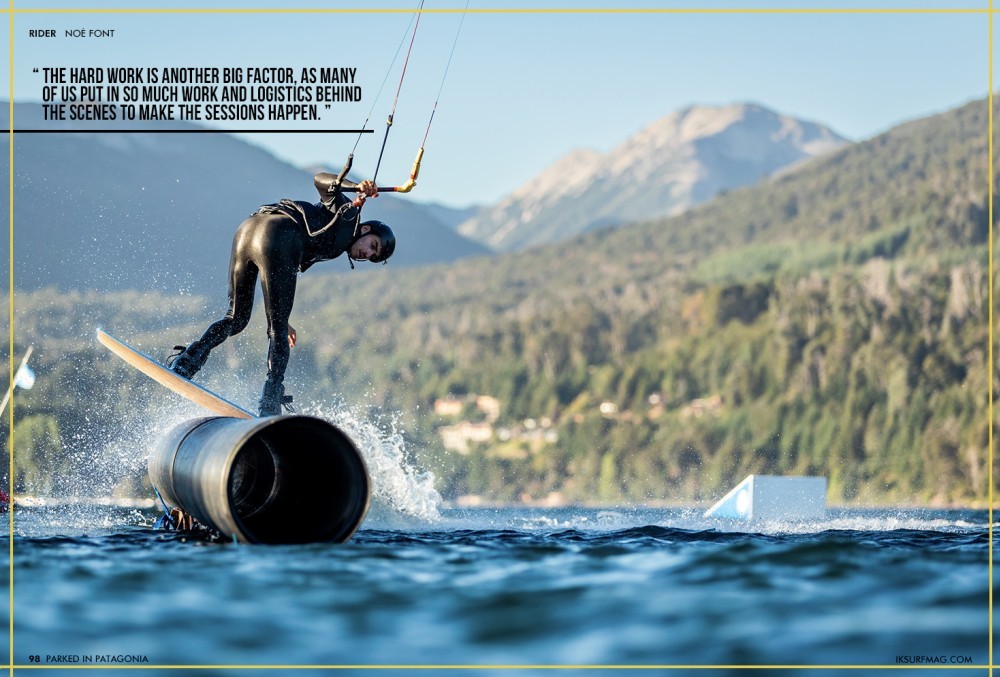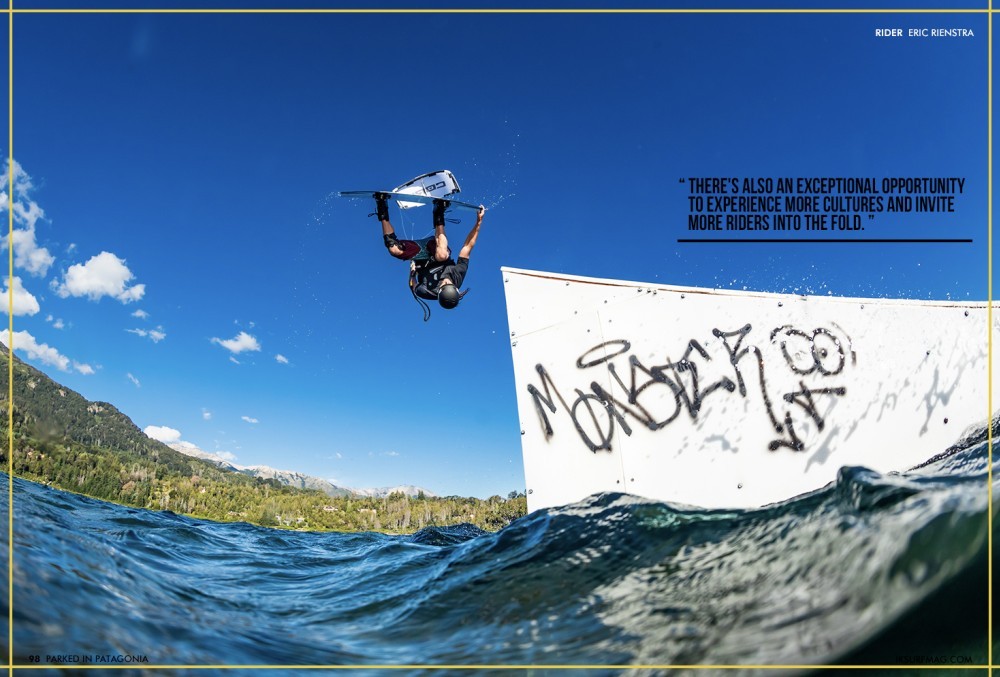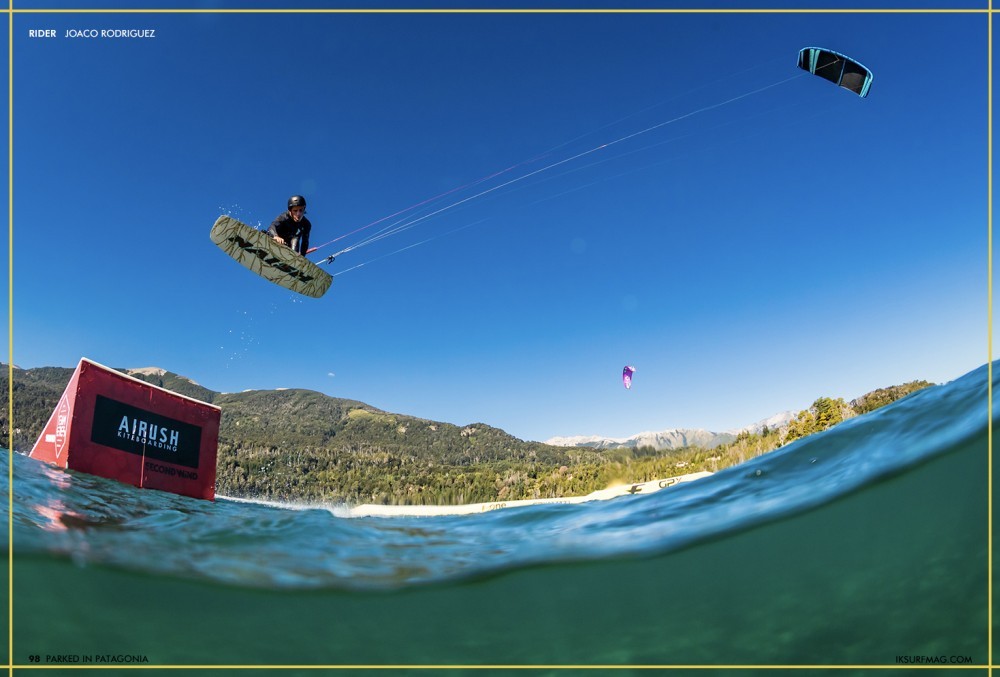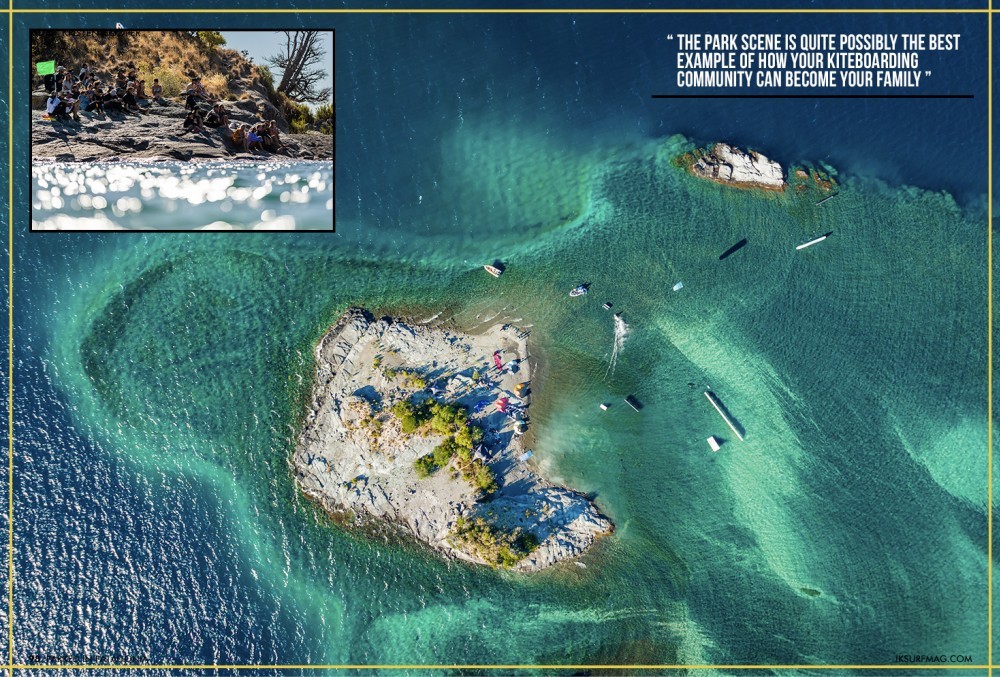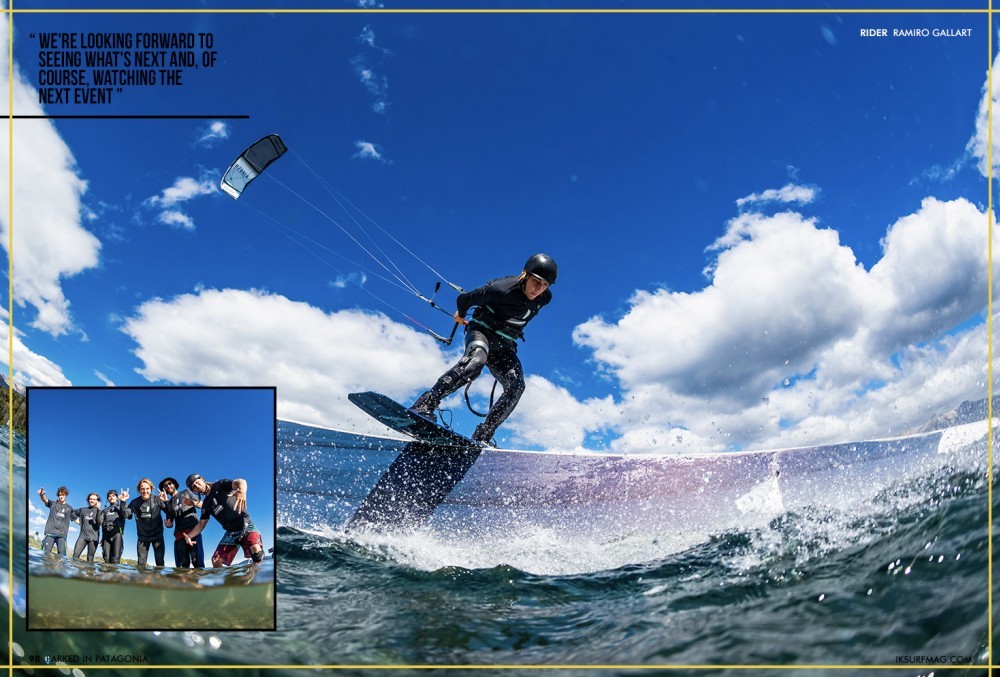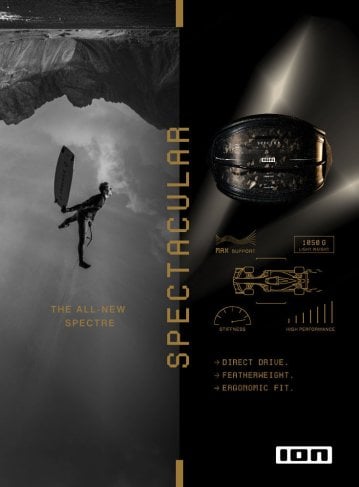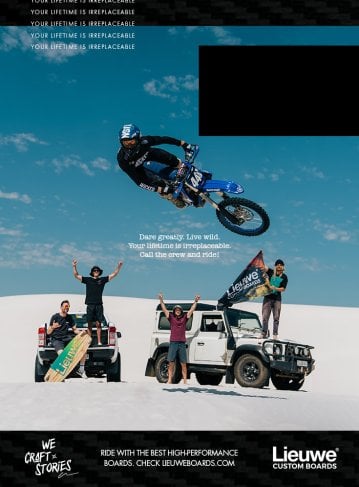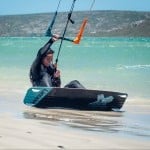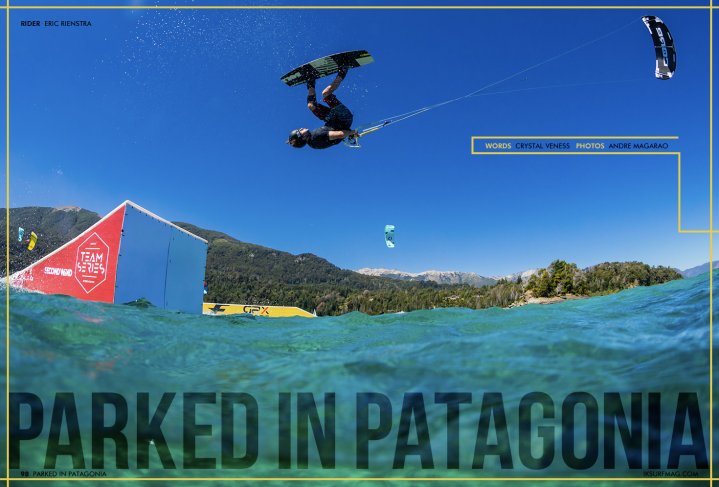
Parked in Patagonia
Issue 98 / Tue 11th Apr, 2023
Park riding, a niche segment of kite sports, is one of the closest-knit communities in competitive kiteboarding. After a quiet few years due to the pandemic, park riding is experiencing a revival, starting with the first Kite Park League event of the year in Patagonia! In this feature article, Editor Crystal Veness interviews some of the key members of the park community to find out what went down in Patagonia, and what's coming up for the future of this discipline!
Ah, Patagonia. You'll be forgiven if the first thing that comes to mind is the world-famous brand, considering its history of event sponsorship within kiteboarding, supporting events like the Hood River Slider Jam, the Cape Hatteras Wave Classic, and the Triple-S Invitational. Park riding was in its heyday in 2019 when the Triple-S Invitational held its final event after a 13-year run. This event offered the biggest prize purses and the best parties ever seen in the world of kiteboarding, and its cancellation was the end of an era. However, it was well-timed, as the pandemic struck the following year, which effectively stopped international kiteboarding events as we knew them - for a while.
In this article, we're talking about the original Patagonia, the one that inspired the popular outerwear brand's logo and one of the most beautiful geographical regions in the world. We're taking a trip south - far, far south - to Argentinian Patagonia, the site of the first event in the 2023 Kite Park League World Tour!
Xander Raith, an athlete that lives in two worlds as a professional kiteboarder and semi-pro snowboarder, was right at home in the scenery of Villa La Angostura, with flat water at his feet and mountain peaks high above. As Chief Editor of the KPL, Xander took on the task of documenting the event, describing the surrounding environment beautifully: "Kiteboarding often takes place in some of the most beautiful locations, and the Patagonia Invitational was no exception. The event was held on the water's edge of a remote island in Lake Nahuel Huapi. The lake itself and the surrounding vibrant, green Patagonian mountain range co-existed as a pristine slice of unfiltered beauty that became unimaginably alluring with the temporary addition of a world-class kite park. The park consisted of five individualised features that floated in stark contrast to the surreal crystal clear glacial water that riders had the privilege to ride on throughout the entirety of the event."
It sounds magnificent, doesn't it? If you closed your eyes, you could picture it. Luckily, you don't have to because top photographer Andre Magarao was on the scene, and the photos accompanying this article perfectly showcase the incredible environment these athletes turned into their playground. In this article, we've caught up with three major players in park riding and the men that stood atop the podium in Patagonia; Noè Font, Eric Rienstra, and Ramiro Gallart, who was the glue that brought this event together in his home country of Argentina!
Before we dive in, let's take a closer look at what park riding is, for those that have little exposure to this avenue of the sport. We asked Noè Font, one of the most talented and creative kiters on the planet in this modern day, to describe it: "To begin with; for me, what makes kiteboarding such a beautiful sport is that you can perform very different activities under the same kite. This being said, park riding is what I consider to be the most boardsports-esque discipline, which sits closer to the other sports I love, like surfing, skateboarding and snowboarding. In that regard, we take a lot of inspiration from them and incorporate tricks and different ideas into our style of kiteboarding."
Take a pause and watch Park Is Easy for a short and sweet introduction to park riding. Noè expands on the unique aspects of this discipline, saying, "As I said in my ION "Write Your Own Chapter" video, what makes riding in the park so special is the community aspect of it. You can't just go to any beach and ride features with your kite. You need a crew of riders who are willing to put in the time and effort to build these obstacles. That's what makes this discipline stand out from the rest; you are practising an individual sport, but without your community, there is no action."
Park riding is one of the most tight-knit communities in competitive kiteboarding. When your riding area is limited to a small pond with a few wake park style features installed by the riders themselves, there is no choice but to become close. Riders make their way into a smooth rotation, taking turns hitting the features, only interrupted by the occasional wipeout, resulting in a chorus of friendly jeers and casual ribbing. Conversely, when a rider sticks something truly impressive for the first time or achieves an NBD (Never Been Done) trick, the athletes around them erupt into excited cheers.
This is a group that aspiring pro kiteboarders often dream of joining, but achieving a seat at the table is no easy feat. So, how does one make their break into park riding? Perhaps the best person to ask is one of the riders on the outside. Matias Lee is an Argentinian athlete on the FLYSURFER international team. While he is not a known name in the park riding scene, he is an excellent example of a rider that gave it a shot, simultaneously proving that one doesn't need a C kite or a board purpose-built for park - he competed in this event on freeride equipment!
Matias says, "I wouldn't say I'm a park rider; I spent most of my time practising freestyle as a kid. I got into park while exploring the different faces of kiting to have fun. It is always nice to learn something new and feel the rush of progress - that exponential learning at the start. I never really tried it until a good friend of mine, Rami Gallart, introduced me to the cable park and later convinced me to go to Hood River. In park, you need a community; the park depends on the will of everyone."
When stepping out for the first time, it certainly helps to have the support of someone like Rami, one of the most respected riders in the park scene. Adapting to park riding is quite a bit easier if you're a high achiever in another category, such as freestyle, or another sport entirely, as was the case with Eric and Xander in snowboarding and Rami in skateboarding. Some basic freestyle moves and some experience with features at a cable wake park will help you come into a kite park and hold your own. Camera skills might also come in handy because it seems like all of the best park riders are top-notch content creators as well!
Kite parks are few and far between, with the only permanent slider parks in Hood River and Cape Hatteras in the US. Having had the good fortune to travel to and ride in both slicks, albeit never on the sliders and rails themselves, I can confirm it's an intimidating scene to be around. Everybody knows everybody, and their talent is through the roof! Someone aspiring to enter the world of park would need a whole lot of confidence and some thick skin. Think of it like switching terms in the middle of your senior year of high school. Being the odd man or woman out is uncomfortable, to put it lightly. Unless you can prove yourself quickly by stomping a solid trick off the kicker or back lipping the rail, you may be on your back foot. If you constantly interrupt the rotation with crashes - not a big deal in big kite spots, but a major disruption in small kite parks - you might find yourself on the outside pretty quickly.
Though everything has its ups and downs, the park scene is no exception. It's clear that park riding is going through a transition, and perhaps now is the best time to step in and give it a go. Eric noted that most of the top-rated park riders took some significant steps in their personal life during COVID, some getting married, others starting families, and others taking on full-time jobs. He adds, "They will be back, though. Once a park rat, always a park rat!" Rami also recognised the passing of the torch, saying, "A few of the legends that started this movement have moved on to their next chapter, and now it's our time to bring it up. A new generation is coming with many new riders from different places. We definitely will miss all these guys, and hopefully, they will still join us in a few events, but it is time to expand the frontier of park riding out of the US to assure the continuity of the discipline that we love."
One of the biggest conversations surrounding park riding is what is holding it back. The talent in this scene is absolutely unreal, and the progression it fosters is seriously impressive. But most of the kiteboarding world has never seen a kite park in person and never will. The riders weigh in on the issues, Noè noting the lack of access to a spot, crew of friends, or the resources required to build a slider park. Eric adds that the perception of park as a dangerous sport is another major factor. He says, "We need to do a better job of showing how easy it can be so that people stop thinking it is out of their league. For anyone who thinks they will never be able to do it, hitting a kicker hooked in is pretty much as easy as sending it off a wave!"
Ramiro takes a more philosophical approach when addressing the park community's barriers, looking at human nature as a limiting factor. "It's hard, and most people want to do what's easiest. Everybody wants to avoid learning. This has been reinforced in every aspect of our daily life, especially in social media. They all want this dopamine rush of a reel, like, reaction, and almost no one actually spends the time to read something with a message with actual value (thanks to everyone actually reading this). As we lose the struggle, we also lose the reward; because of our nature, we need the challenge. And that's why once you overcome the first struggle, the satisfaction you get is unmeasurable and pushes you for much more."
On how to break past this barrier, Rami continues, "I think the way to overcome this is just by showing that pretty much everybody that has tried it loves it - you just need to go through that learning stage. We can make learning easier by building parks and giving clinics, but we need to focus more on the reward you get and the community it builds. We must tell our stories and let everyone know we can enjoy the smallest things. In Hood River, locals at 60 years old go hooked in with their skimboards through the sliders. There is no need for impact or going gnarly; a hooked in cruise in the park can be super fun too."
Every park rider is in agreement: Community is key. The park community is super passionate, from the core crew that travels the world together to the new riders they meet in the local spots. Eric says, "They ride park because it is the way they like to ride, not for fame and fortune." Rami agrees, "We don't do events to compete and try to get a title. The main thing that gets us all together is sharing sessions, trying new setups and pushing the sport. Of course, when you compete, you want to win, but that's not what drives us. Most of the time, we just want to ride and shoot."
Another strength of the park community is its creativity; seemingly every top park rider is also a whiz behind the camera or in the editing room. There is as much room for creativity on the water as off. Noè shares his perspective: "I like to think that riders are forced to be more creative in many ways. Coming up with new tricks, different lines, and new ways of riding the same feature, even building new features, it's a creative process from top to bottom. You'll find a lot of the park riders are very creative people outside of the water as well. The hard work is another big factor, as many of us put in so much work and logistics behind the scenes to make the sessions happen. You definitely can't be a lazy person to do this." Oh, and back to the topic of his film, Park is Easy, he adds, "Riding park is most definitely not easy - in case someone didn't get the pun."
Ramiro examines the shift away from the boardsport mentality in the sport as a whole, "Kiteboarding in the last couple of years has put its focus on the average rider that doesn't really care what's happening in the sport in terms of tricks, videos, or kite culture. It's all about new technology or how I can have more carbon in my bar or board. There is nothing wrong with searching for the improvement of the gear, as that opens the door to progress in riding, as seen in the big air discipline. But, when this becomes an obsession where the videos from brands are only about selling their new development and technology - like if they were a tech company - instead of sharing the passion for the sport and pushing the boundaries of what can be done, we are losing our souls as a sport. Without this, we lose the sense of community, the admiration for the ones that made a change, and the drive from younger generations to be like their idols. If we lose this, then every rider becomes a passenger on a train that only cares about getting to the next station rather than where that train will end up. That's what we are pursuing for the future of park riding: bringing back the boardsport mentality to kiteboarding."
With the commitment and continuing work of passionate park riders to grow this sport, what does the future hold? Eric points to the number of features increasing and the growing use of natural elements, allowing more people to dabble in park style. He has noticed big air riders like Nick Jacobsen incorporating dock rails into his media, showing a whole frontier that remains to be explored. Noè has seen freestyle riders taking more interest in the park scene, pointing towards more growth in the future. He sees a bright future and is proud to be part of a community of genuine athletes who aren't there for business or profit but where everyone is doing it for the love.
Now that the Kite Park League has expanded to primarily global events, starting with the Patagonia Invitational, there's also an exceptional opportunity to experience more cultures and invite more riders into the fold. Eric's favourite part of this event was riding with the local Argentine shredders, where everyone was so stoked to have a park to ride and were sending it hard and cheering for each other - it was the highest energy session he's had in a long time. For Ramiro, seeing his park community connect with the people he knew from home in such a unique location was incredibly emotional and gratifying. With forty people from all over the world sitting at the same table, playing ping pong, drinking fernet, and eating asado, it was a real celebration of life and community.
For Noè, his highlight was how Argentina welcomed them all with open arms and allowed the event to happen. As he said, it takes a town to make things like this happen on their modest budgets, and everyone who entered the event was one hundred percent down for the cause. He says, "It's inspiring to go to a new place you've never been to before or heard of much kite park action and see how many people are so stoked to do it. I'm looking forward to going back."
As someone that only found my way onto a kiteboard in 2015, I've always watched the park community with great curiosity. While it hasn't reached the popularity of the big air scene, freestyle scene, or the spectacle that is hydrofoil racing, it is an important style of kiteboarding that is focused on the soul of the sport. It is a community like no other; these riders travel, live, ride, and create together, and all in pursuit of park riding progression and encouraging the expansion of this niche segment of kiteboarding.
The park scene is quite possibly the best example of how your kiteboarding community can become your family and all the highs and lows that come with it. With talented riders and passionate athletes like Ramiro Gallart, Eric Rienstra, and Noè Font representing and advocating for the growth and success of park riding, we're looking forward to seeing what's next and, of course, watching the next event, kicking off in Sicily in May!
Click here to read the full recap of the Kite Park League Patagonia event by Ramiro Gallart.
Videos
By Crystal Veness
Editor at IKSURFMAG, Crystal Veness hails from Canada but is based in South Africa. When she isn't busy kitesurfing or reporting on the latest industry news for the mag, she is kicking back somewhere at a windy kite beach or working on creative media projects.


